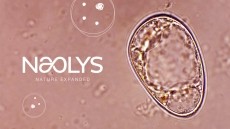ABC shines light on tainted ingredients with book chapter on essential oil adulteration

Essential oils, the lighter, more volatile fractions of botanicals that are secreted by many plants, show up most often as fragrance and functional ingredients in cosmetics and some foods but also are used as constituents of dietary supplements in some cases. They are among the oldest extracted botanical ingredients known (remember frankincense and myrrh from the Bible?) and, as such, have among the longest histories of adulteration.
The book chapter, titled “The Adulteration of Essential Oils,” is from the award-winning 2016 book Handbook of Essential Oils, 2nd edition (Taylor & Francis). It can be accessed the new “Essential Oil Adulteration” section of the ABC-AHP-NCNPR Botanical Adulterants Program (BAP) website.
Cost of ingredient opens door for adulteration
According to ABC, because a relatively large amount of plant biomass is often required to produce a small amount of essential oil (EO), the cost of many of these EOs has traditionally been very high. High prices for commodities have often led to adulteration, at the economic benefit of the seller and frequent detriment to the buyer or user. Adulteration occurs when a labeled ingredient is substituted or diluted with a different, undeclared, lower-cost material, creating an ingredient or product that does not have the features and/or does not provide the benefits claimed by the seller and expected by the buyer.
The raw material mass/market price and/or demand calculation is different for each botanical ingredient category, said Mark Blumenthal, founder of ABC. Thus, it’s difficult to say whether the EO adulteration problem is worse or not as bad as other categories.
“It is difficult to compare the level of issues related to adulteration of essential oils (EOs) to those found in botanical raw materials and/or botanical extracts. To make such comparisons sometimes presumes that there are large-scale studies on adulteration of each category,” Blumenthal told NutraIngredients-USA.
But Blumenthal did say that EOs present problems of identification peculiar to the category.
“Quality control (QC) personnel will no doubt acknowledge that some of the challenges related to determining the true identity and authenticity of an EO is quite different from that of a raw botanical ingredient (e.g,. a dried whole or powdered herb) in at least several ways. For example, with whole herbs, visual organoleptic methods can be useful: the visual ability to look at a whole plant part can be helpful in determining the genus, sometimes even the species, of a particular plant. If the plant is cut into small pieces or is powdered, microscopic analysis can detect characteristic morphology (shape) of various plant tissues. This cannot be accomplished, obviously, with EOs, which, are almost always in liquid form,” he said.
Tee Tree Oil document
One of the popular EOs that has been shown to be adulterated is Tea Tree Oil, subject of a BAP bulletin released earlier this month written by Ezra Bejar, PhD. Stefan Gafner, PhD, chief science officer of ABC, said a recent analysis showed that about half of 47 products analyzed did not contain the proper chemical signature characteristic of tea tree oil, which is used in topical costmetics and home common cold remedies.
In some instances, tea tree oil adulteration may be due to confusion regarding the common name: A number of plants are known as “tea tree,” including species in the genus Melaleuca and the closely related genus Leptospermum, plus species in the genera Kunzea and Baeckea from Australia and New Zealand.
However, most of the adulteration of tea tree oil is believed to be for financial gain. Economically motivated adulteration includes dilution with lower-cost byproducts derived from eucalyptus (Eucalyptus globulus and other species of Eucalyptus) oil and other essential oils, or the addition of pure chemical compounds derived from plant material, fermentation, or chemical synthesis.
“With prices ranging from $30 to $34 per kilogram and an increasing demand, tea tree oil is a prime target for economically motivated adulteration. Materials that are offered at a substantially lower price should be viewed with suspicion,” Gafner said. Gafner has long experience with EO identification having worked for many years in product development for personal care products manufacturer Toms of Maine.
Transparency forum
Gafner will join a panel of industry experts who will delve into the subject of transparency during a free online webinar to be hosted by NutraIngredients-USA on Sept. 21. The webinar will look at why brands should care about this concept and will look at recent efforts by the industry to boost transparency. Along with ABC’s series of Botanical Adulterants Program publications, the webinar will also talk about the Botanical GMPs document that was developed by the American Herbal Products Association in cooperation with GNC. The webinar will also delve into the inauguration of the Supplement OWL, a cooperative industry wide effort that was spearheaded by the Council for Responsible Nutrition. This database will make it easier for regulators, consumers and other interested parties to see what products are in the market and what they contain.
The panel, which will be moderated by this reporter, consists of:
- Stefan Gafner, PhD, chief science officer of the American Botanical Council. Gafner received his degree in pharmacy at the School of Pharmacy, University of Berne, Switzerland and did postdoctoral work at the University of Illinois – Chicago. Gafner has taken a lead in the publication of ABC’s adulteration documents.
- Suzanne Shelton, principal in the Shelton Group. As a consultant to some of the top brands in the dietary supplement industry, Suzanne has been a longtime champion of best practices in the industry.
- Edward J. Fletcher, Director of Quality & Sustainability at Herbal Ingenuity. He is a current AHPA a board member and as chair of the Botanical Raw Materials committee he helped spearhead the development of the AHPA/GNC document.
- Steve Mister, president and CEO of the Council for Responsible Nutrition. Steve has helped spearhead the institution of the Supplement OWL label database, an industry-wide effort to boost transparency about what products are in the market and what ingredients they contain.
To register for NutraIngredients-USA’s FREE webinar, scheduled for Sept. 21, 2017, click here.














